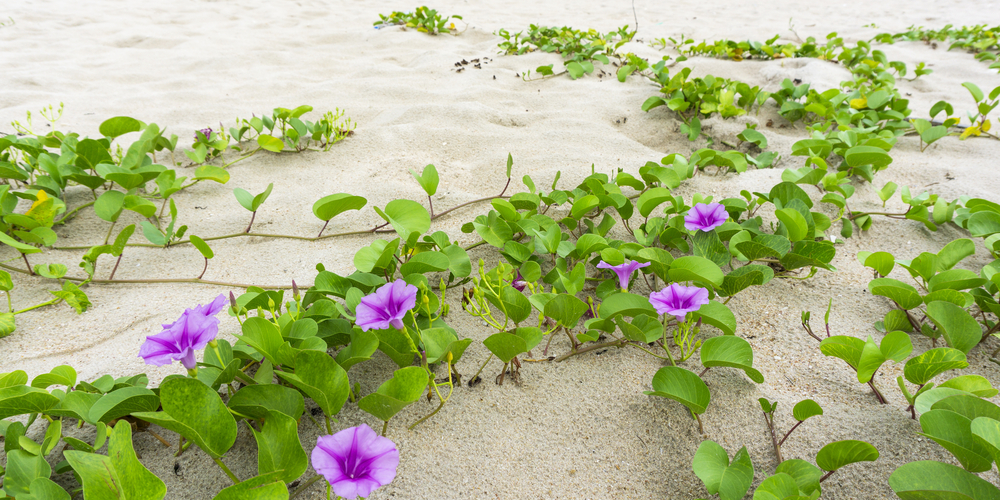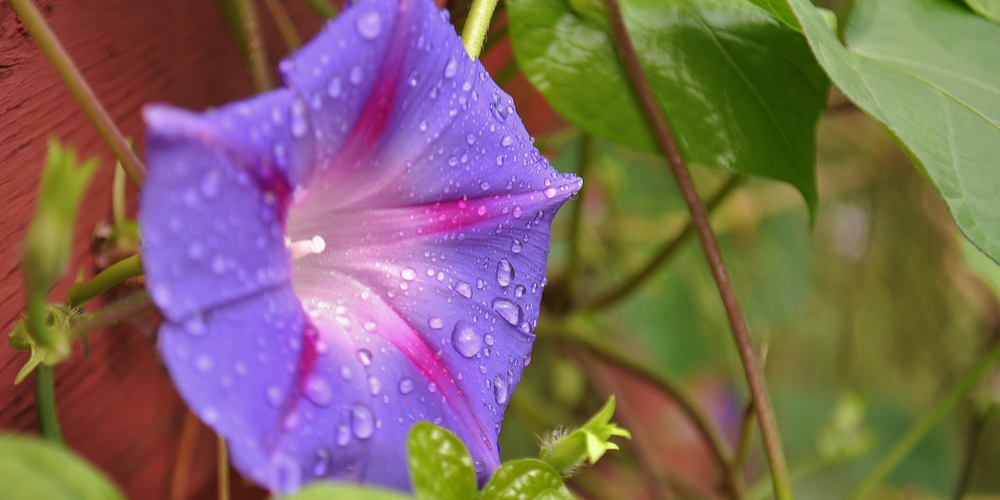Morning glories have a magical appeal. They are among the favorite species for most gardeners for good reasons. Not only are these plants beautifully colorful and attractive, but they are also relatively easy to grow and take care of.
Morning glories come in different varieties and colors and are known for their superior adaptive skills: they thrive in most soil conditions and tolerate cold and warm temperatures alike. However, their versatility and strength make them quite aggressive.
If you decide to plant morning glories in your garden, you should keep them under control to prevent them from invading other plants’ space. Still, you won’t regret introducing them to your yard as they add an elegant and charming feeling to your outdoor space.
Under the appropriate conditions, they will produce plenty of blossoms during the summer. But do morning glories come back every year? In essence, are these plants perennials or annual? Keep reading to find out.
Do Morning Glories Come Back Each Year?
Depending on where you live, you can grow Morning glories as perennials or annuals. While tolerant to cold temperatures, most varieties won’t resist frost. In USDA hardiness zones between 10 and 11, you can expect your morning glories to live the winter and come back during the spring and summer.
You can increase the probability of their return by pruning the plants’ vines and removing old growth to encourage vigor and strength the following season. However, keep in mind that most varieties reseed themselves. Avoid letting seeds fall to the ground and remove dead vines from the area to prevent an aggressive invasion of morning glories in your yard.
Varieties such as the moonflower and the common morning glory are popular perennials in hardiness zones between 9 and 11. With such species, you won’t have to do anything for them to come back the following year. Only keep watering them (even if with less frequency) and ensure they get full sun during the day.
If you live in colder areas, don’t worry. You can have annuals. Alternatively, you may want to bring perennials indoors when the winter arrives. Provide a trellis or an adequate structure for your morning glories to maintain their vertical shape and place them in a pot with good drainage. Select a container with drainage holes for best results and ensure you keep the soil moist.
While morning glories don’t need fertilizer when outdoor if you are moving them indoors, you may want to add a product rich in phosphorous to encourage blooming. Of course, avoid overdoing it. Too much fertilizer will be counterproductive to the plant’s growth and result in no flowers.
When growing annual morning glories, just like their name suggests, you’ll need to remove them at the end of summer. Be careful when doing that because these plants tend to develop a deep root system: you won’t want to damage it before it’s time. The good news is that you can always start new plants once the last frost of the season is over. While that might sound like a hassle, most people like to replant morning glories. After all, they are beautiful plants that don’t require much attention.
Luckily, you can grow morning glories from seeds, which you can harvest either before the winter comes. Pick the flowers that drop off the plant and take the black seeds you’ll find inside a small pod when brown and dry (which signifies the seeds are ripe). Remember that they are toxic, so handle them with care and don’t let them hang around animals and children. In colder climates, you’ll want to start the seeds indoors before spring comes.
Taking Care of Morning Glories
Regardless of whether you grow your plants as perennials or annuals, you’ll have to take adequate care. While they don’t require much, if you want to make them thrive in your garden and give you stunning colorful flowers in the summer, you’ll need to pay attention that they get enough sunlight and that their soil is moist.
Plus, ensure you provide your plant with plenty of space to support its growth. These low-maintenance species can grow up to 10 feet each year. To give them an attractive shape, consider getting a trellis, or arrange them around a pergola or another restructure where they could fit.
To get the most out of the blooming season, consider practicing some deadheading to remove the old flowers and make space for new blooms. You can leave the flowers in their place and let them naturally fall.
However, bringing seeds to maturity requires a lot of energy from the plant, which results in fewer flowers. If you like to enjoy a colorful garden, you will benefit from deadheading. Plus, your yard will look much neater and more aesthetically pleasing. Removing old growth is a way to keep this relatively aggressive plant under control and prevents them from becoming weedy.
The best time to cut morning glories’ flowers is when they start to look ragged. While you are at it, you may also want to make sure you remove any damaged or diseased stem.
The Bottom Line: Are Morning Glories Annuals or Perennials?
As you should have learned by now, morning glories can be annuals and perennials. A few varieties like the purple and the heavenly blue morning glory will only last one growing season before naturally dying.
Perennial types usually last longer. Under the proper conditions, you can expect them to live a couple of years before having to remove them from your garden. Depending on where you live and which growing conditions you offer to your plants, your morning glories might last longer. Protect them from the wind and don’t expose them to harsh cold temperatures if you would like to see them again the following year.
Growing Morning Glories in your garden is one of the best things you can do to add a splash of color and attract beneficial pollinators to your yard. Because they don’t need much from your side, once you select the right spot, all you need to do is give them enough water, and they’ll thrive.

